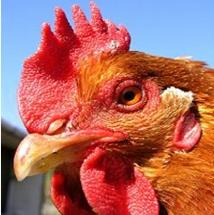Enzyme technology presented at WPC 2008

New generation heat stable E. Coli phytases, improving the feeding value of DDGS and enzyme solutions to maximise use of corn/soy diets, were some of the latest research topics presented by Danisco Animal Nutrition at the World Poultry Congress in Brisbane, Australia.
Dr Ceinwen Gilbert, Technical Services Manager, Danisco Animal Nutrition, presented a poster comparing the bioefficacy of two coated phytases for broilers fed corn/soybean meal based diets. The study concluded that the bacterial E. Coli phytase was more heat stable – E. Coli phytase recovery from the pelleted feed was on average 27% greater than P. Lycii phytase.
Broilers fed bacterial E. Coli phytase had significantly higher bodyweight gain and numerically higher tibia ash than broilers fed the fungal P. Lycii phytase. The superior bioefficacy of the bacterial E. Coli phytase was attributed to both the higher heat stability and the ability of the phytase to better release phytate bound phosphorus in the feed.
DDGS and enzymes
Soren Dalsgaard, a senior scientist with Danisco, presented a poster which examined how enzyme technology can be used to reduce certain anti-nutritional factors in distillers dried grains with solubles (DDGS). He reported that wheat DDGS increases gut viscosity in poultry, which reduces the nutrient digestibility and bird performance.
Adding a highly effective xylanase reduced the viscosity and potentially increased the feeding value of wheat DDGS. Supplementing wheat DDGS with enzymes offers producers the option to use DDGS in their poultry feeds to save costs, without compromising bird performance.
Enzyme mixture
Dr Aaron Cowieson, senior scientist at Danisco Animal Nutrition, presented two papers which examined how feed enzymes can improve the feeding value of corn/soy based diets. Adding a xylanase, amylase and protease enzyme combination to a corn/soy based broiler diet significantly improved the ileal digestibility of amino acids and improved the apparent metabolisable energy by 3%. The enzyme combination improved broiler weight gain by 6% and feed conversion by 5 points.
Also in the news:
Australia WPC2008: Call for poultry think tankRelated link:













